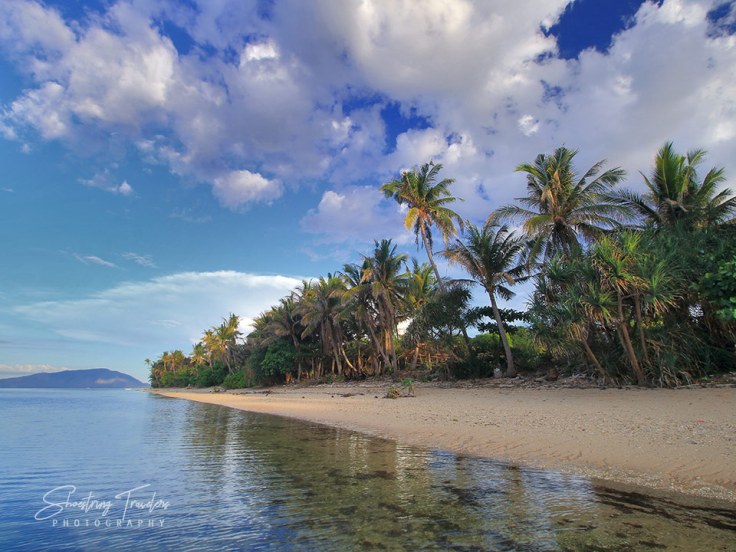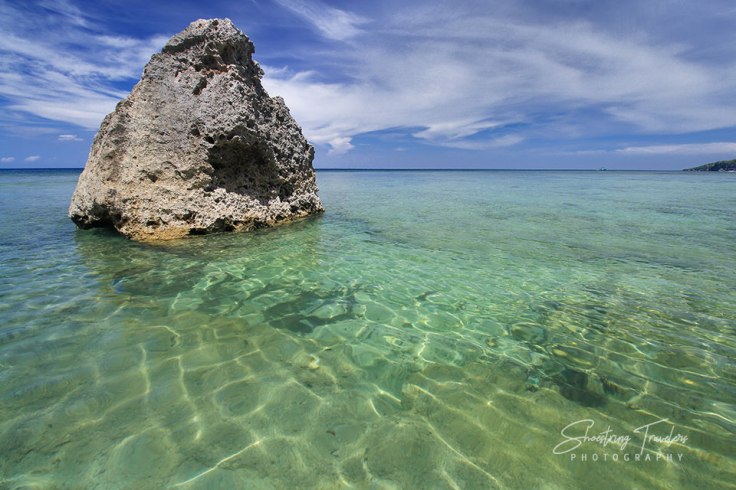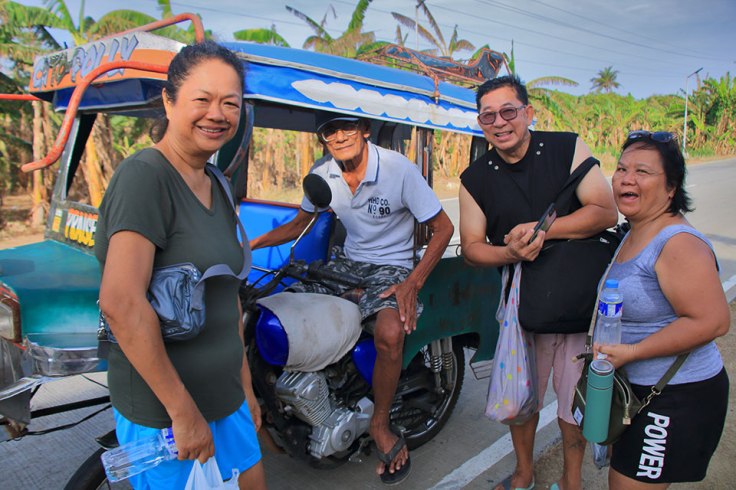Known among Filipinos as the hiding place of Hiroo Onoda, one of the last Japanese Word War 2 stragglers to surrender, Lubang Island remains something of an enigma. It is located just 40 kilometers west of Calatagan, Batangas, or 117 kilometers southwest of Manila yet seems like a remote destination. Few people are aware of its long white sandy beaches, picturesque rock formations, marine biodiversity, and unspoiled rainforests.
Lubang wasn’t the original May destination for our two friends and us but Marinduque, our first choice, was in the midst of a rabies pandemic so a change in plans was in order. Lubang was a difficult choice since there is little information about it online, much of it outdated. But once we got there, we realized we had stumbled into a gem of a destination.
Lubang is a group of seven islands south of Manila and northwest of the much larger Mindoro Island. It is part of the province of Occidental Mindoro (OksiMin). Lubang Island is the largest of the seven. The whole of Lubang is composed of only 2 towns – Lubang town and Looc. Our ferry from Nasugbu, Batangas took us to Tilik port in Lubang town and a 15-minute trike ride brought us to Seabourn Beach Resort just outside the town center, our home for the next 3 days.
The sunset scene on our first day on Lubang was, if anything, indicative of the beauty of the place. Lubang is known for its colorful sunsets, and although it was cloudy for the next two twilights, the sunrises on the next two mornings were spectacular. (Unfortunately, Leo got too lazy to wake up early morning and missed both chances to capture the striking colors of sunrise.)
We’ve already posted about two of the destinations we visited at Lubang, namely Tubahin Beach and Rock Formations in Looc town and Mahangkig Beach on Cabra Island. But we have only scratched the proverbial tip of the iceberg as far as Lubang’s potential tourism destinations are concerned. Occupying roughly half of Lubang Island, the town of Looc has more to offer besides Tubahin Beach and its Rock Formations. To the west of Tubahin lies a long stretch of white sand beaches including Dangkalan Beach and Barkong Bato Rock Formation and Beach. South of Tubahin is Kansulit Beach and several other white sand beach coves and Bolong Aygo Island. All over this stretch of coastline are more rock formations apparently similar to Tubahin’s. However, there is no road access to all these. As the owners of Seabourn Resort told us we need to take a boat from Tubahin to get there.

Part of Looc town are 2 other islands in the Lubang group of islands: Ambil and Golo. Golo Island which lies to the east of Lubang Island and separated from the latter by a narrow channel has Bulacan White Beach with its gorgeous white sandbar, Pandan Beach and the Golo Lighthouse with panoramic views of Mindoro Island. Ambil Island, an extinct volcano island to the northeast has Balabara Beach and a rugged coastline. There are many more beaches all over Looc, most of them unnamed in available maps of the area. Lubang also lies on the western end of the Verde Island Passage, dubbed as the center of the center of the world’s marine biodiversity, which means it offers numerous opportunities for diving and snorkeling.
Ten kilometers south of Lubang’s town center is Barangay Binakas which features the Binakas Picnic Grove and Beach, rock formations including towering cliffs, and Punta Cave. This coastal area is ruggedly beautiful, typical of the whole of Lubang Island. A little walk inland brings you to Hulagaan Falls while a bit further north and at the center of the island is the Onoda Trail. (If not for the unusually scorching afternoons that were plaguing the whole country this summer, we would have visited Binakas and the Onoda Trail.) Northwest of Lubang Island and facing Tagbac Beach is Cabra Island. We were able to visit Mahagking Beach on Cabra from Tagbac Beach but did not make it to beautiful Balibago Beach, Talampo Beach and the Cabra Island Lighthouse. These are more than enough reasons for a return visit to Lubang.
In recent years we have interacted so much more with the locals of places that we have visited. So even if we were not able to tour some of Lubang’s scenic spots in our itinerary, we were able to spend more time with the locals, chatting with many of them at various places in town. Every morning, we would go to the town’s public market for breakfast and to buy some items for our meals. Along the way we encountered several century-old houses that were still being used and still in good condition.
Fishing and farming are the major livelihoods of Lubang’s populace. Transportation links to Batangas – the nearest province in the Luzon mainland – and Mindoro proper are not as well-established as other islands in the MIMAROPA region although one can get ferries to Tilik and Agkawayan ports from Nasugbu, Calatagan and Batangas City. Despite this relative remoteness our tour of various municipalities in Lubang suggests that most of its people are not living below the poverty line, something we have come to expect with remote or isolated communities.
The food here is cheap, especially seafood – we spent only P70 each for a hearty and delicious breakfast of pansit (fried noodles) and lugaw (porridge) at the public market. The people are kind, welcoming and helpful. The crime rate is practically zero (the jails here are empty most of the time) so guests need not fear when traveling alone even to Lubang’s remote destinations.
Despite these positive traits working for it, Lubang Island remains an unknown destination probably due to lack of tourism marketing and infrastructure, although that may change soon. There are few inns and resorts here and these plus the homestays seem not yet ready to accommodate a larger influx of tourists. The local government is working to promote tourism but does not want the kind of tourism that damages the environment and has a negative impact on the moral fiber of Lubang’s residents. We are also hoping and praying that, if and when Lubang attracts a greater and steadier stream of visitors, the pristine nature of its environment and the simplicity and good nature of its residents would still be preserved.




























Leave a comment